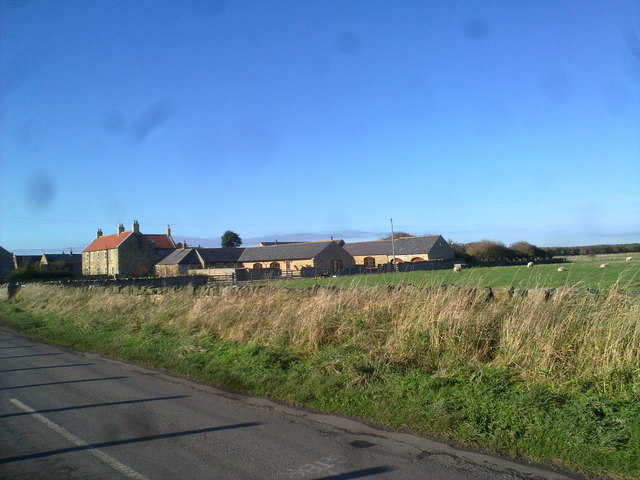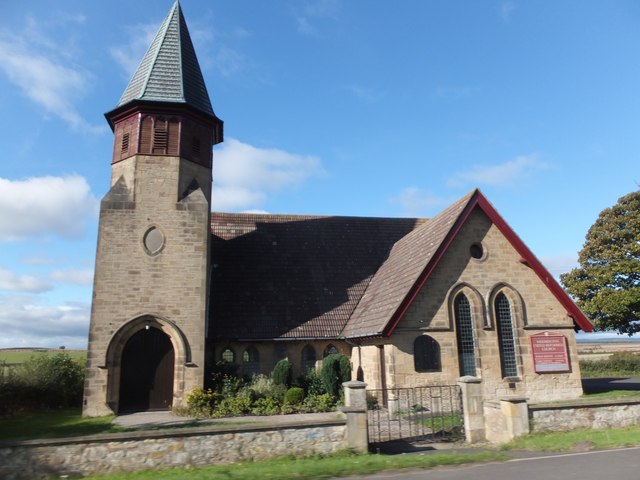Topics > Northumberland > Widdrington Village > Widdrington, 1848
Widdrington, 1848
WIDDRINGTON, a parochial chapelry, in the union, and E. division of the ward, of Morpeth, N. division of Northumberland, 8 miles (N.E. by N.) from Morpeth; containing 447 inhabitants. This place was long the seat of the Widdrington family, many of whom at various periods greatly distinguished themselves against the Scots, and on other occasions. Sir William Widdrington, in 1642, was expelled from the house of commons for raising forces in defence of Charles I., by whom, in the following year, he was elevated to the dignity of baron; after the battle of Marston-Moor, he left the kingdom, when his estates were confiscated by the parliament, but returning in the service of Charles II., he was slain at the conflict of Wigan. William, 4th lord Widdrington, was attainted in 1715, for his share in the rebellion of that year, and his property, to the amount of £100,000, was sold for the public advantage; thus consummating the downfall of a family that had flourished during a space of seven centuries. The ancient castle, which stood in a noble park of 600 acres, was razed to the ground about 60 years since, and a new edifice, now much out of repair and uninhabited, was built upon its site.
The district was separated from the parish of Woodhorn, and invested with distinct parochial rights, in 1768. It chiefly belongs to Lord Vernon, and comprises 4902a. 1r. 30p., mostly tithe-free, and of which a fifth is pasture land. The soil is a strong clay, producing fine crops of wheat and beans, and the surface is generally level, with a gentle elevation towards the village, which commands extensive views in every direction, and the vicinity of which formerly abounded in wood: on the cast is the sea. A small colliery is in operation, and there is a quarry of freestone. The living is a perpetual curacy, in the gift of Lord Vernon, with a net income of £67; the impropriation belongs to the Mercers' Company, and the incumbent of Hampstead, London. The chapel had parochial limits so early as 1307, and was originally dedicated to St. Edmund; at the Dissolution it was called Holy Trinity chapel, from which period it continued dependent on Woodhorn. The edifice was repaired by Sir George Warren, in 1768, and comprises a nave, chancel, and south aisle; the chancel has an oratory or chantry porch projecting from it on the south, lighted by two windows. There is a place of worship for Presbyterians. In 1843, a skeleton with the teeth perfect, and an urn, were found in ploughing a field.
Extract from: A Topographical Dictionary of England comprising the several counties, cities, boroughs, corporate and market towns, parishes, and townships..... 7th Edition, by Samuel Lewis, London, 1848.

from https://openlibrary.org/books…
A topographical dictionary of England, Samuel Lewis, 7th Ed., 1848
- A topographical dictionary of England
comprising the several counties, cities, boroughs, corporate and market towns, parishes, and townships, and the islands of Guernsey, Jersey, and Man, with historical and statistical …
Added by
Simon Cotterill

Co-Curate Page
Druridge (village)
- Overview Map Street View DRURIDGE, a hamlet, in the parochial chapelry of Widdrington, union of Morpeth, E. division of Morpeth ward, N. division of Northumberland, 9¼ miles (N.E. by E.) …


from https://openlibrary.org/books…
A topographical dictionary of England, Samuel Lewis, 7th Ed., 1848
- A topographical dictionary of England
comprising the several counties, cities, boroughs, corporate and market towns, parishes, and townships, and the islands of Guernsey, Jersey, and Man, with historical and statistical …
Added by
Simon Cotterill



